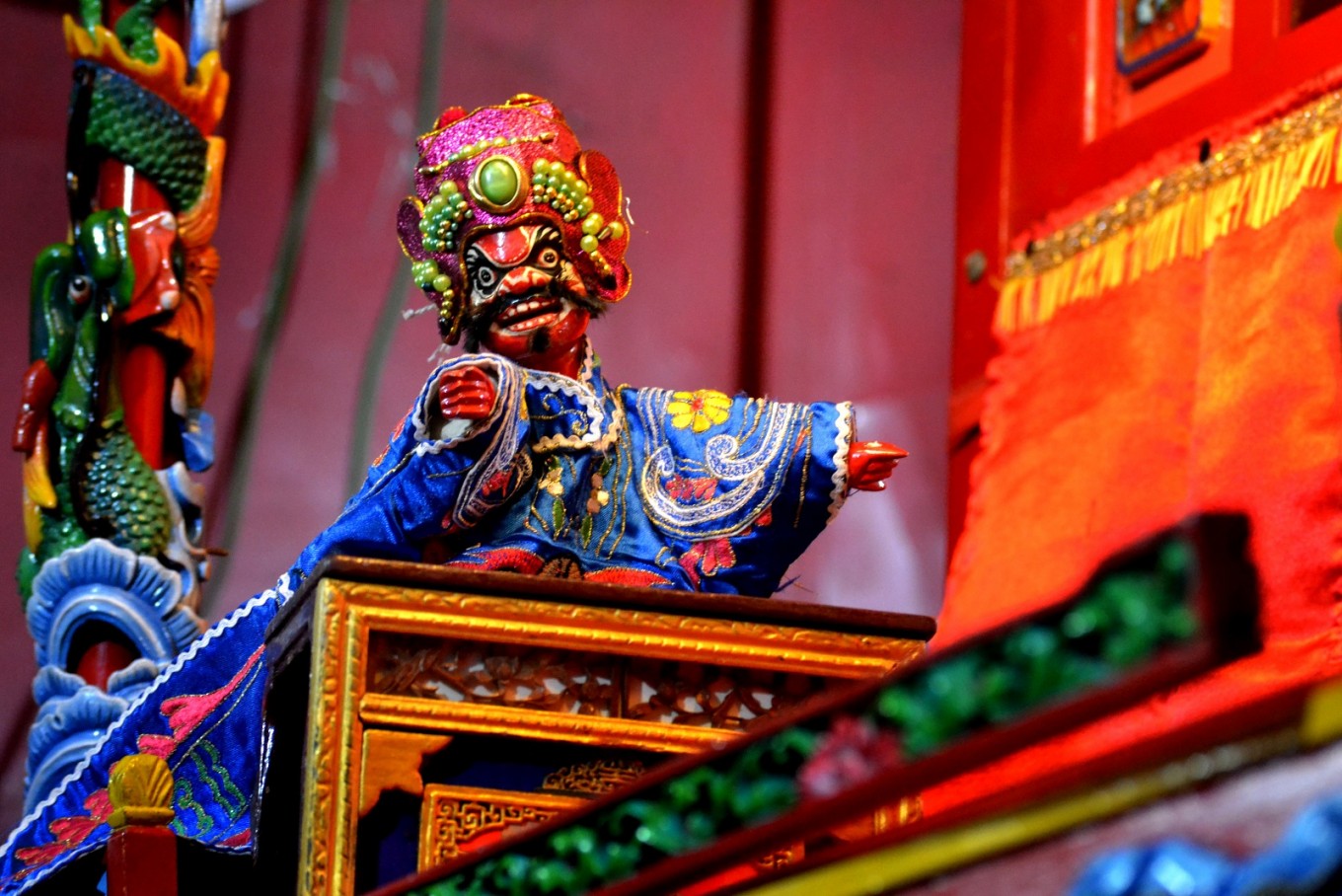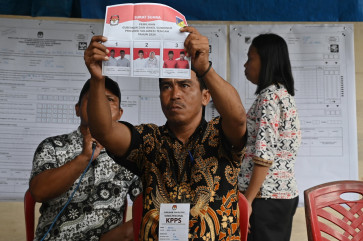Popular Reads
Top Results
Can't find what you're looking for?
View all search resultsPopular Reads
Top Results
Can't find what you're looking for?
View all search resultsAnnual 'wayang potehi' show unites differences in Surakarta
Change text size
Gift Premium Articles
to Anyone
A
humble stage with a small red room built above it is a striking sight at Pasar Gede in Surakarta, Central Java. Set in front of the Tien Kok Sie Temple that is situated beside the market, the stage was prepared for the showcasing of wayang potehi (Chinese wooden puppets).
An annual event hosted by the temple, wayang potehi is part of the celebrations of the birth of the Goddess Welas Asih, otherwise known as the Goddess Kwan Im. This year it will feature a performance by Wayang Lima Merpati, a wayang potehi group originating from Surabaya with Dalang Mujiono as the puppeteer. The tale that they will stage is entitled Sam Hay Lam Tong, a story of King Thio Gong In from the Song Tiauw Dynasty.
As the sky grew darker in the afternoon, the crowd in the courtyard of the Tien Kok Sie Temple grew larger. Believers of the Kong Hu Cu faith, or Confucians, gathered in the temple to burn incense and present other offerings to the Goddess Kwan Im, while others found places on the seats by the main altar, ready to watch the show.
Read also: Wayang Orang Sriwedari survives despite modernization
The fragrance of incense and ginger filled the temple's courtyard, as there was wedang ronde (a warm ginger drink with small dumplings made of rice flour) served as complimentary refreshments to the audience. The audience that evening was not only those who were of Chinese ethnicity, but also members of the community surrounding Pasar Gede, especially children who were excited to watch the puppet show.
Mujiono as Se Hu (puppeteer) begins to bring life to the little puppets in his hands with the help of a Ji Ju (the puppeteer’s assistant) and is accompanied by a team of Au Tay (musicians) who produce music from a variety of instruments, including drums, cymbals, erhu, flutes and trumpets. The story tells about wars and acts of heroism drawn from Chinese epics. Today’s potehi puppet shows are not presented in the Hokkien dialect, but is instead performed in Bahasa Indonesia so that the story could be understood by everyone in the audience.
Read also: Rekindling Malang's Ang Hien Hoo 'wayang orang'
Wayang potehi arose during the Jin Dynasty and entered this archipelago in the 16th century through trade and migration. Although it was forbidden to perform it to the public from the 1970s to the 1990s, the practice is now rising back up with the few puppeteers who remain.
Today, wayang potehi acts as a vessel for unity, as its enjoyment is not limited to any ethnicity in particular. Furthermore, it is now also performed by artist of various ethnicities, whether they act as the puppeteers, or the musicians.
The potehi puppet show had the ability to bring the community together despite their differences that evening, as dozens of people of different ethnicities, religious beliefs and social class sat together in an atmosphere full of intimacy, enjoying the show and bowls of wedang ronde. (tha/kes)











